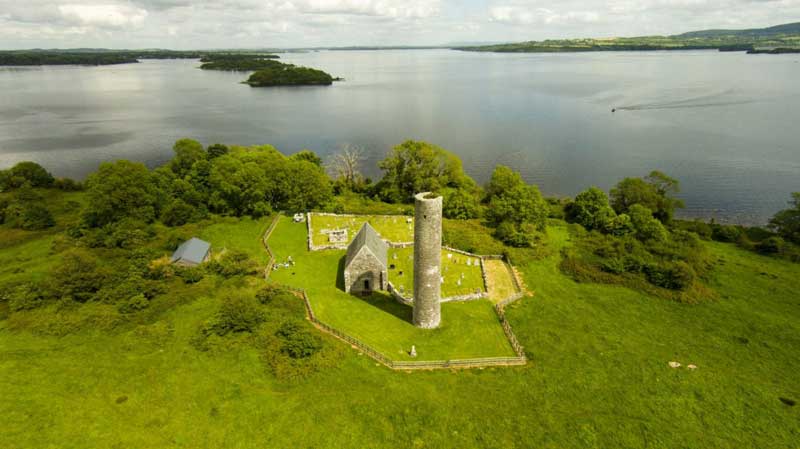Consultants Appointed To Prepare Plan For Holy Island On Lough Derg
Clare County Council has just announced the appointment of a team of specialists to prepare a Visitor Management and Sustainable Tourism Development Plan for Holy Island on Lough Derg.
Dublin-based Solearth Architecture is being engaged to prepare proposals in relation to improving access to the island and the provision of tourism facilities on or near the island, as well as proposals on the marketing and promoting of the Island as a visitor destination, while confirming its historical significance and protecting its built and natural heritage.
In June 2015, Clare County Council acquired 41 acres on Holy Island which, together with the 2 acres already in the ownership of the Office of Public Works (OPW), resulted in the entire island being brought into public ownership for the first time.
Dating back to the 7th century, the island is one of the most important historical and ecclesiastical sites in Ireland, and it has important links to Brian Ború. Buildings on the island include a 24-metre high Round Tower, an Oratory, and a number of churches. Holy Island is on the UNESCO world heritage site tentative list for Ireland as an early medieval monastic site along with Clonmacnoise, Durrow, Glendalough, Kells and Monasterboice.
“I welcome the progress that has been made in relation to the development of a comprehensive tourism development plan as part of the Council’s ambitious and methodical approach to developing this important site in a sustainable manner,” stated Councillor James Breen, Cathaoirleach of Clare County Council.
“The sustainable development of the island for the benefit of tourism and communities in the wider Lough Derg area has long been sought after by Elected Members of Clare County Council. It is very encouraging to see that significant steps are now being taken to develop a blueprint for tourism development and visitor management of the Island, whilst also ensuring the cultural heritage and natural assets that contribute to the Island’s uniqueness are maintained and protected,” added the Cathaoirleach.
According to lead Architect, Brian O’Brien of Solearth Architecture, a practice noted for its sustainable design solutions: “Inis Cealtra is a precious gem and we are delighted to be entrusted with this delicate task of both minding it and finding ways to share it with more people for the benefit of the local and wider community”.
“We’ll be starting with public meetings to draw on the wisdom of the locals who really know the Island and will shortly set up a website to receive everyone’s thoughts throughout the process,” concluded Mr. O’Brien.
Gerard Dollard, Director of Services, Clare County Council, noted that the Plan will take approximately 10 months to complete and will involve a significant level of community consultation.
The preparation of the Plan will incorporate consultation with key stakeholders including the Department of Arts, Heritage & the Gaeltacht, Waterways Ireland, Fáilte Ireland, and local tourism, community and angling organisations. The Council will also be engaging with the OPW as joint landowners and the body responsible for the historic monuments on Holy Island during the Plan preparation process.
Mr. Dollard said: “Holy Island is very much part of the fabric of the local community and continues to be used as a burial ground. Therefore, it is essential that the overall plan not only provides for the future management and development of this important site but takes full cognisance of the rich archaeology, landscape, wildlife and cultural heritage of the area.”
He continued: “Solearth Architecture, who have brought together a comprehensive team of experts in the area of tourism product development, visitor management, archaeology and architectural conservation, ecology, landscape and cultural heritage, will be required to consider all of these aspects in recommending a framework for the future management and development of the island.”

